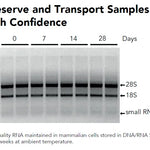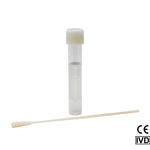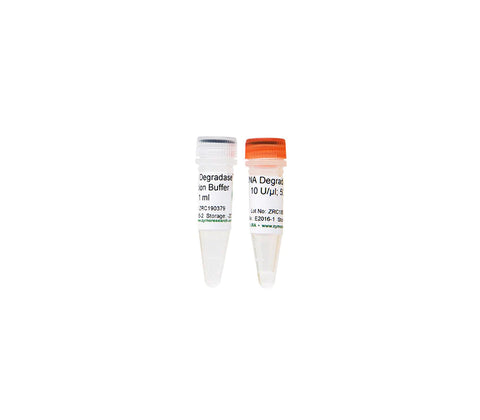Successfully Added to Cart
Customers also bought...
-
 DNA/RNA Shield (50 ml)Cat#: R1100-50DNA/RNA Shield reagent is a DNA and RNA stabilization solution for nucleic acids in any biological sample. This DNA and RNA stabilization solution preserves the...
DNA/RNA Shield (50 ml)Cat#: R1100-50DNA/RNA Shield reagent is a DNA and RNA stabilization solution for nucleic acids in any biological sample. This DNA and RNA stabilization solution preserves the... -
 DNA/RNA Shield SafeCollect Swab Collection Kit (1 ml fill) (1 collection kit)Cat#: R1160The DNA/RNA Shield SafeCollect Swab Collection Kit is a user-friendly collection kit for stabilizing the nucleic acid content of samples collected with a swab. DNA/RNA...
DNA/RNA Shield SafeCollect Swab Collection Kit (1 ml fill) (1 collection kit)Cat#: R1160The DNA/RNA Shield SafeCollect Swab Collection Kit is a user-friendly collection kit for stabilizing the nucleic acid content of samples collected with a swab. DNA/RNA...
Highlights
- Quick and simple procedure for completely degrading DNA into its individual nucleotide component for quantitative analysis (e.g., whole-genome methylation analysis by HPLC, TLC, etc.).
- 1 hour, single-enzyme digest vs. conventional 6 - 16-hour multi-step enzyme digestion protocols
Original Manufacturer
Satisfaction 100% guaranteed, read Our Promise
Innovated in California, Made in the USA
Highlights
- Quick and simple procedure for completely degrading DNA into its individual nucleotide component for quantitative analysis (e.g., whole-genome methylation analysis by HPLC, TLC, etc.).
- 1 hour, single-enzyme digest vs. conventional 6 - 16-hour multi-step enzyme digestion protocols
Original Manufacturer
Satisfaction 100% guaranteed, read Our Promise
Innovated in California, Made in the USA
Description
Performance
Technical Specifications
| Assay Condition | DNA Degradase in 1X DNA Degradase Reaction Buffer. Incubate reaction mixtures at 37C for ≥ 1 hour. |
|---|---|
| Concentration | 10 U/µl |
| Enzyme Inactivation | 70C for 20 minutes |
| Storage | Store at -20C for up to 12 months. Avoid repeated freeze/thawing of reagents. Prolonged storage is at ≤ -70C. |
| Unit Definition | One unit (U) is the amount of enzyme required to degrade 1 µg of λ |
Resources
Documents
FAQ
The preferred substrate for Degradase and Degradase Plus is double stranded DNA. There will be only minor degradation of single stranded DNA template and no degradation of RNA template.
Yes, you can scale the reaction up or down as necessary. For the best results, digest no more than 1 µg of DNA with 5 U (1 µl) of enzyme in 25 µl reaction volume. The reaction volume is just as important as the amount of DNA, and we recommend scaling up the volume of enzyme accordingly. For example, if the reaction volume is 100 µl, use 4 µl of DNA Degradase (Plus).
Yes, the protocol time is a suggestion for sufficient digestion. Additional incubation time can be added to completely ensure that all sample has been digested. There is no harm in letting the reaction proceed longer.
Yes, you can add excess enzyme to ensure full digestion.
The best way to confirm degradation is to run the sample on a gel. Nothing should be visible for the Degradase-treated samples. You do not need to purify the reaction.
Citations
Need help? Contact Us




